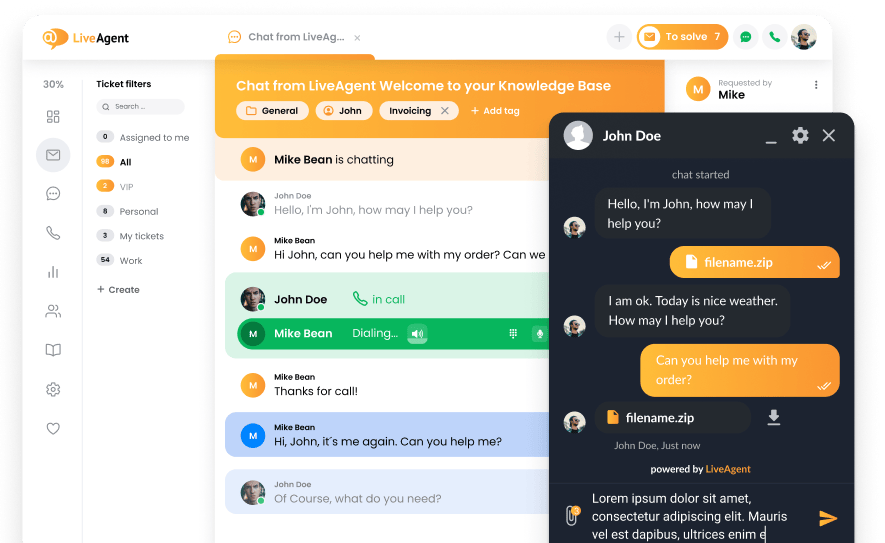What is a bug?
A software bug is a term used to describe an error, mistake, or defect in a computer program that causes accidental results. Buggy systems are not only user-unfriendly but they can result in low customer satisfaction rates. Therefore, every SaaS company should strive to provide bug-free products.
Bugs can cause a wide variety of issues from small formatting changes in the displayed text, to big issues like the program freezing or crashing, loss of valuable data, and even damage to hardware.
There are many types of bugs that can cause different short-term, as well as ongoing issues. Among the most common issues development and testing teams should be familiar with are:
- Functional errors
- Syntax errors
- Logic errors
- Data type mismatch
- Security errors
- Usability errors
- Performance errors
- Unit level bugs
- System-level integration bugs
Bugs in applications can be caused by a variety of factors like miscommunication, unclear requirements, deviation from standards, software complexity, and many more. It is a good practice to periodically generate and analyze bug reports to document issues and avoid them in the future.
Many say that debugging is twice as hard as writing the code itself. To help testing and development teams identify and eliminate bugs, there is a wide variety of debugging tools available. Debugging tools are a type of software that runs and monitors the target program under controlled conditions. This helps identify any changes or deviations that can indicate a malfunction.
It goes without saying that delivering a program that is full of bugs can greatly affect your company’s reputation, worsen customer relationships, and can even lead to customer churn. It’s important to avoid them as much as possible and in case they occur, resolve them in a timely manner within agreed-upon SLAs.
Watch this video about software bugs and how to prevent them
Did you know that the term “bug” originated from a real insect found in a computer? Nowadays, it refers to errors in program code that can lead to malfunctions, often at critical times. Explore the importance of proactive bug prevention strategies as the best defense against these issues.

Topics
- Bugs in computer technology
- Bug bounty programs
- Types of bugs
Video summary
The video discusses the concept of bugs in computer technology and program code. It explains how bugs can cause malfunctions and mentions bug bounty programs that pay researchers and ethical hackers to find and submit bugs before they become critical. The most common types of bugs are arithmetic, interface, logic, syntax, and teamwork bugs. The video emphasizes the importance of preventing errors in the first place by following a sound development process and testing code early and often. If a bug is found, it needs to be debugged by isolating it, determining the root cause, and fixing the program. Crowdsourcing with bug bounty programs can be an effective method to comb through complex and dense code.
Frequently Asked Questions
What is a bug?
A definition of a bug in software development is an error or a defect in the program. Unexpected system behaviors and issues occur as a result of the bug. It is any behavior or result that stands against how the program or system was designed. After finding bugs in production environments, they are usually resolved by updates and software patches.
Why should you avoid bugs?
Not every mistake can be avoided. Often it is not dependent on our actions, but many mistakes can be avoided. Why is it important? Errors that pop up on your system or your website can cause losses. And while a short-term error will not threaten your company largely, a large-scale and long-term critical issue can bring you large financial losses.
How to access a list of bugs in LiveAgent?
A list of new features and fixed bugs can be found in the changelog at: https://dev.ladesk.com/all/. It is worth following and checking if any errors occur.
![Expert badge]() Expert’s note
Expert’s note
Bugs in software can cause issues ranging from minor formatting changes to major system crashes and data loss. Avoid them for better customer satisfaction.

LiveAgent is a customer service software that offers various features such as VoIP phone systems, self-service software, inbound call center software, complaint management system, client portal software, email management software, and help desk software for startups. The company also provides demo, pricing, integrations, and alternatives, as well as a support portal, data migration, system status, and request for proposal. Sales contacts and socials are available for customers to schedule a demo or subscribe to the newsletter for updates and discounts. The website also mentions terms & conditions, security policy, privacy policy, and GDPR compliance. Additionally, the website uses cookies for personalized experience.
Leverage FAQ software to optimize your customer self-service experience
Create differentiated content for customers and agents by using LiveAgent's knowledge base tools. Set up multiple knowledge bases and FAQs, enable a search widget with smart suggestions, and enhance agent productivity. FAQs are a powerful tool for customer support strategy, reducing repetitive questions, increasing customer satisfaction, and improving agent efficiency. LiveAgent offers various pricing plans to suit different business needs.

 Български
Български  Čeština
Čeština  Dansk
Dansk  Deutsch
Deutsch  Eesti
Eesti  Español
Español  Français
Français  Ελληνικα
Ελληνικα  Hrvatski
Hrvatski  Italiano
Italiano  Latviešu
Latviešu  Lietuviškai
Lietuviškai  Magyar
Magyar  Nederlands
Nederlands  Norsk bokmål
Norsk bokmål  Polski
Polski  Română
Română  Русский
Русский  Slovenčina
Slovenčina  Slovenščina
Slovenščina  简体中文
简体中文  Tagalog
Tagalog  Tiếng Việt
Tiếng Việt  العربية
العربية  Português
Português 
 Expert’s note
Expert’s note




